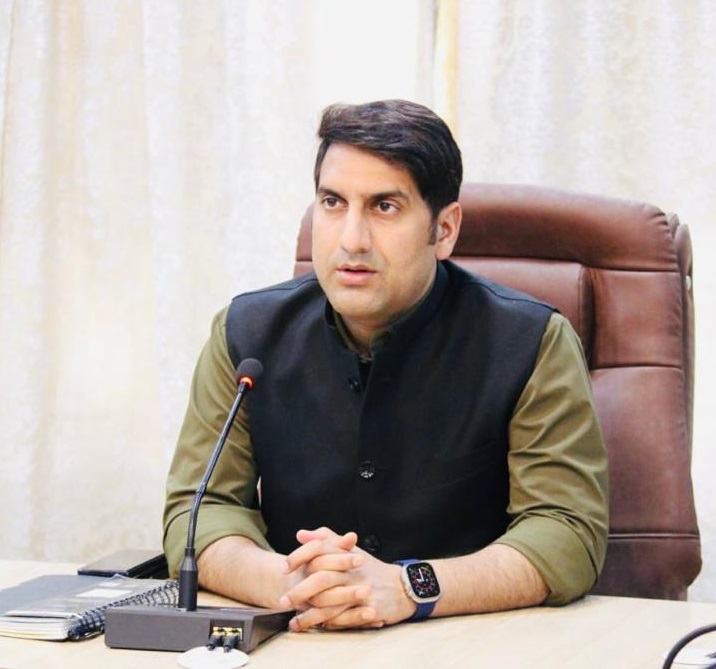Srinagar becomes Model District of the country under Swachh Bharat Mission Grameen(SBM-G) 2.0
All villages attain Model village status under ODF Plus Programme

District figures among top 10 districts of the country in achievers 3-Star Category at All India Level
SRINAGAR, July 11: The Srinagar District has achieved yet another milestone and became Model District of the country under Swachh Bharat Mission Grameen(SBM-G) 2.0.
Under the supervision of the Deputy Commissioner Srinagar, Mohammad Aijaz Asad, the District has achieved the journey of making all the 26 villages as Model villages and completed the target of 100% Model Villages under prestigious cleanliness scheme Swachh Bharat Mission (SBM-G 2.0).
The District Administration Sringar with dedicated Team of Department of Rural Development & Panchayati Raj launched an ambitious plan to transform all the villages of the District into Model villages under Swachh Bharat Mission (SBM-G 2.0).
The District had embarked on cleanliness mission to transform its rural villages into Model Villages with a vision to enhance the living standards of its inhabitants, improve infrastructure and promote sustainable development, this initiative aims to bring about a comprehensive socio-economic upliftment.
The Srinagar District (Rural) comprised of four CD-Blocks Harwan, Khonmoh. Srinagar and Qamarwari having jurisdiction of 21 Gram Panchayats comprising of 26 villages from picturesque foothills of Faqir Gujree, Harwan to Sangri Khonmoh and plain areas of Lasjan, Nowgam and Panzinara. Recognizing the need for inclusive cleanliness of villages,
To achieve the vision to reality, a rigorous saturation campaign was launched to ensure that all the Households, Schools/Anganwari Centers. Panchayat Ghars in the villages of the District have access to a functional toilet, with separate facilities for men and women. Besides, a number of drains/soakage pits were constructed in the villages for disposal of grey water in forward linkage with UEED of Srinagar Municipal Corporation. As a result of which, all 26 villages of District Srinagar were declared as ODF Plus in Aspiring Category.
While embarking into next category of sanitation to make these villages ODF Plus Rising, segregation sheds and compost pits were constructed for solid waste management to segregate the waste and its proper.
Barely after making these villages ODF Plus Rising, a massive sanitation drive was launched on the directions of the Deputy Commissioner Srinagar in all the Gram Panchayats by way of door to door collection of waste and its proper disposal by roping in village sanitation Committees, Welfare Committee, an outsourced agency namely “SAAF (A group of volunteers)”, which has yielded results and villages observed to have minimal litter, minimal stagnant waste water and no plastic waste dump.
Even, a massive IEC campaign was launched in all the villages by engraving painting at prominent places depicting messages/slogans with regard to benefits of cleanliness, thereby the villages became ODF Plus Model.
Meanwhile, the people of the District have lauded the efforts of the District Administration Srinagar to imbibe/embrace concept of cleanliness in District Srinagar (Rural) under Swachh Bharat Mission (SBM-G 2.0), as a result of which District Srinagar (Rural) has become 1st Model District of the country and also Ranks among top 10 Districts of the country in Achievers 3 Star Category at All India Level.
Pertinent to mention that the Central Government has approved the Phase II of the Swachh Bharat Mission (Grameen) [SBM (G)] till 2024-25 with focus on Open Defecation Free Plus (ODF Plus), which includes ODF sustainability and Solid and Liquid Waste Management (SLWM). The program will also work towards ensuring that no one is left behind and everyone uses a toilet.
Under the program, provision for incentive of Rs.12,000/- for construction of Individual Household Toilet (IHHL) to the newly emerging eligible households as per the existing norms will continue. Funding norms for Solid and Liquid Waste Management (SLWM) have been rationalized and changed to per capita basis in place of no. of households. Additionally, financial assistance to the Gram Panchayats (GPs) for construction of Community Managed Sanitary Complex (CMSC) at village level has been increased from Rs.2 lakh to Rs.3 lakh per CMSC.
In addition, the SBM-G Phase II will continue to generate employment and provide impetus to the rural economy through construction of household toilets and community toilets, as well as infrastructure for SLWM such as compost pits, soak pits, waste stabilisation ponds, material recovery facilities etc.





